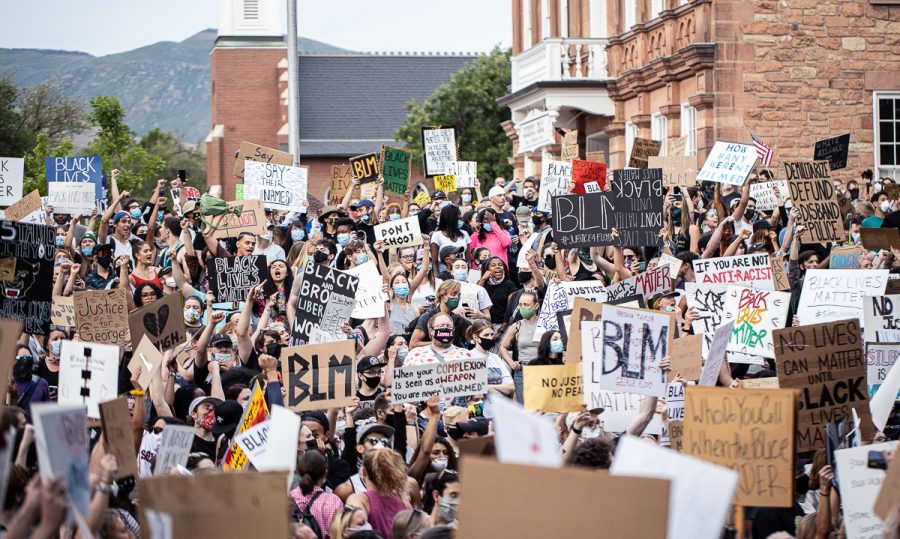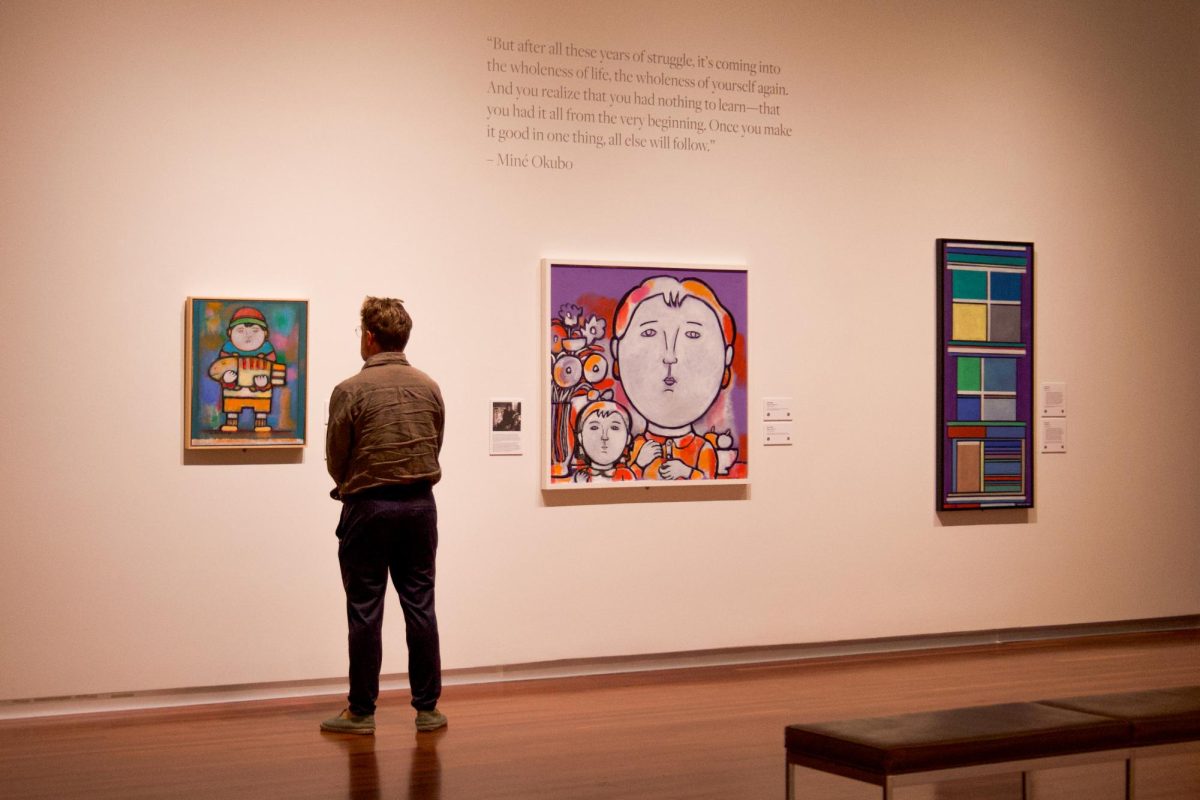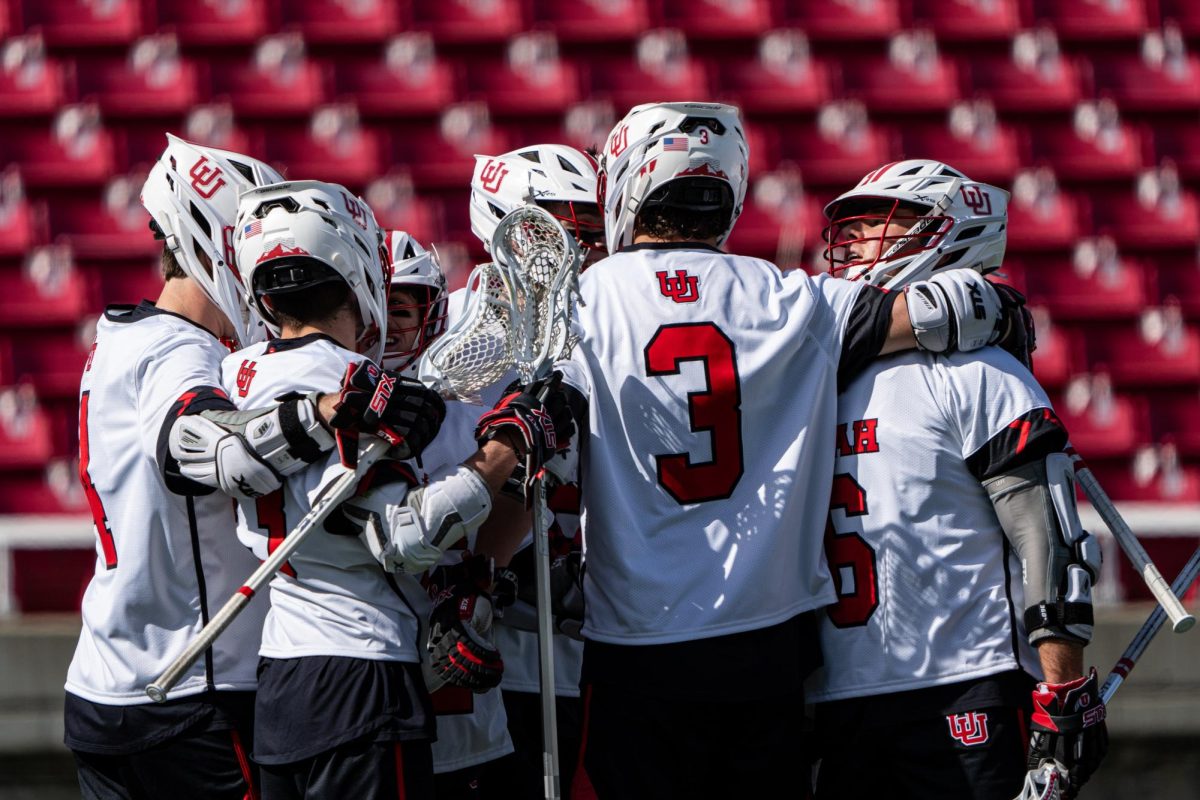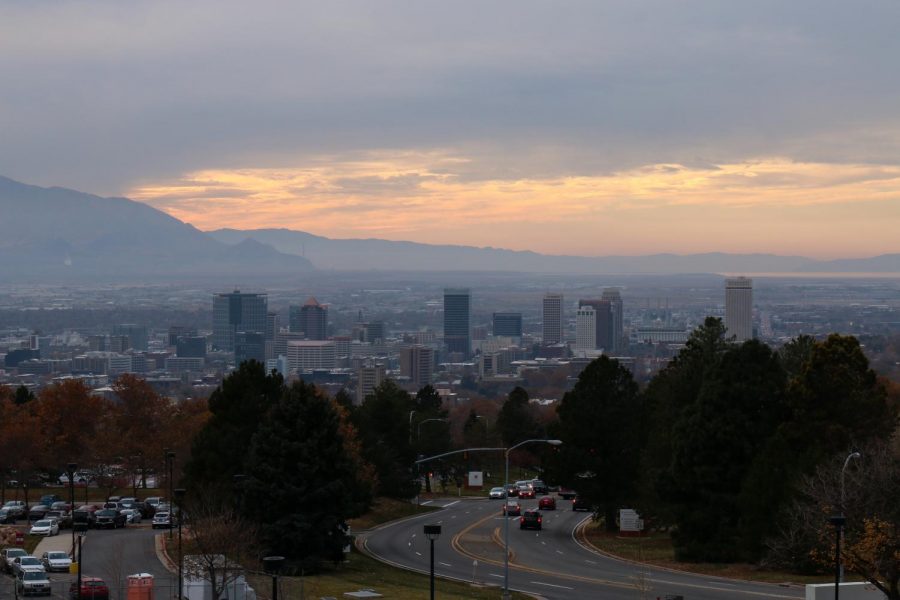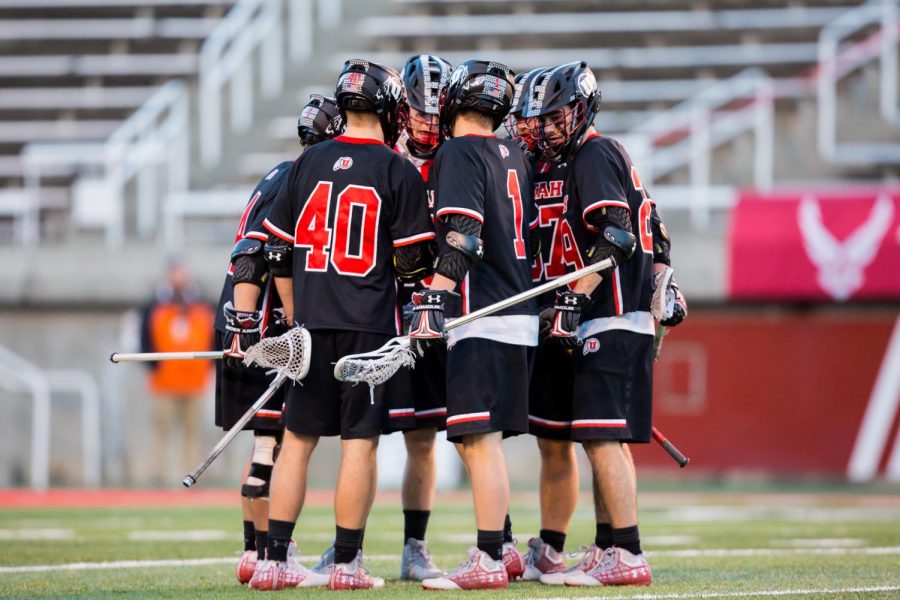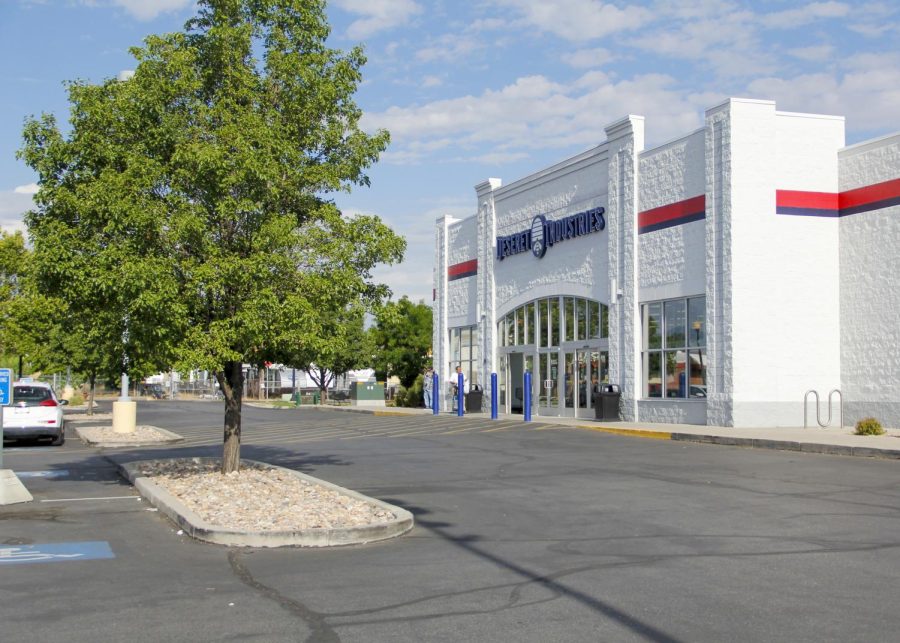The Role of Art During Times of Political Injustice
Protesters raise their sign in Salt Lake City, Utah on June 4th 2020.(Photo by Manasij Mukherjee | The Daily Utah Chronicle)
October 14, 2020
When Seraph Young first led the way for female voters in Utah, she could not have forecasted the dramatic ripple effect it would have on women’s enfranchisement from the 1800s to today. In fact, almost as soon as Utah women began voting, Congress barred votes of polygamy supporters from entering the ballot box. Now, on the 150th anniversary of women in Utah being allowed to vote and the November election fast approaching, fostering debate over voter registration and access has become paramount.
Lamentably, growing distrust in the United States Postal Service and controversy over mail-in ballots has made voting an impossible choice for many who wish not to risk in-person voting during a global pandemic. There is some good news, however, as arts collaborators in Salt Lake City are working within their mediums to help reinvigorate the voter registration movement.
The Utah Museum of Fine Arts’s latest exhibition, Utah Women Working for Better Days!, is an artful representation of voter empowerment that the larger Salt Lake community can draw from. Posters featuring colorful slogans, the use of animals and eye-catching graphics serve to make their statements on voting memorable. A favorite piece of mine from the J. Willard Marriott Library Special Collections features a yellow-eyed, crouching pink tiger underneath emboldened calligraphy which reads “The Future is Female.” Other works include visual interpretations of quotes from famous voting figureheads, such as Elizabeth Cady Stanton.
While there is much talk about how voting will be safely conducted this year, there are other, more pressing political frustrations that people are attempting to define through their art. The Black Lives Matter movement, which has caused significant, sweeping controversy across the US, is no less understated in Salt Lake City than other metropolitan areas, in which Black community members feel their voices are not being heard nor valued.
On Aug. 6, 2020, as cries for justice continued to ripple across the country, KUTV reported on a large-scale Black Lives Matter mural painted in front of the Salt Lake City hall. According to KUTV, the endeavor was supported through stipends provided by the local government. Murals are a particularly popular mode of expression in the heart of Salt Lake City. Currently, at the corner of 800 South and 300 West, murals have been created to memorialize those who have been killed by police officers, not only in Utah but across the US. The vast array of vivid art styles and subject matter of these murals offer an interpretation that is subject to the joint whims of artists and their audiences.
Finding out about local art installations in the city has never been easier, thanks to the wealth of information out there on the web. As for my own research, I was informed of a current arts scene in the Sept. 24 issue of City Weekly magazine. In it, I read a small blurb on Refiner’s Fire, an LGBTQ awareness project composed of billboards at the intersection of 300 South and the space spanning from 200 East to 200 West. This pop-up exhibit pays special attention to AIDS researchers and important persons who advocated for the abolition of conversion therapy.
These kinds of public demonstrations illustrate landmark support for human rights issues as well as highlight an arts culture that can still be maintained in light of social distancing protocols taking place. With art being one highly visible, effective method of ensuring democracy, it is crucial that we further encourage our local artists by attending their virtual exhibits and contributing to them in any way possible.
As our student population gears up for the presidential election taking place this November, it is important for us to remember how we got to this point of having free and fair elections. And to do so, we have to acknowledge the role that expressive art has played in getting us there. Art has continually represented and documented contemporary human life, highlighting various injustices along the way, providing new ways to see and interpret our world. Art allows us to see our society as a whole more fully, serving as a medium in the fight against political injustice.
z.gottlieb@dailyutahchronicle.com


